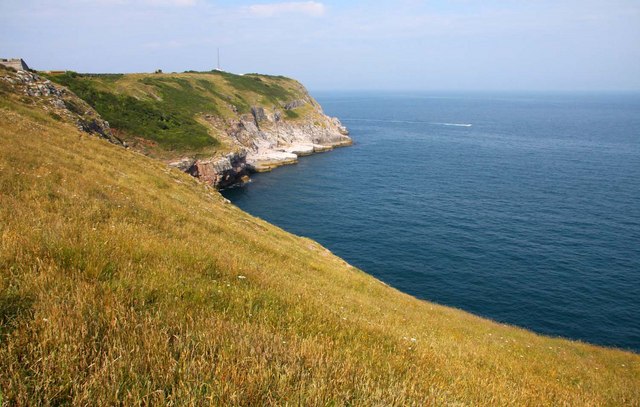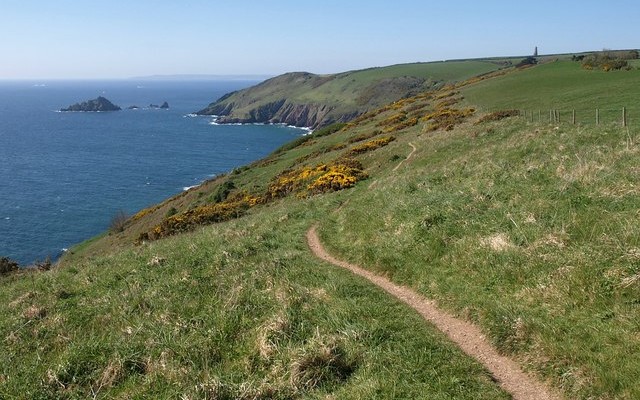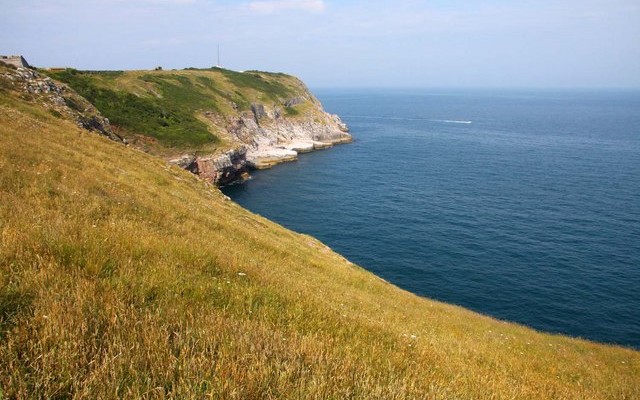Berry Head offers spectacular views across Torbay. So it is not surprising that it was chosen as a strategic location for the defence of this stretch of the south Devon coastline during the time of the Napoleonic Wars, in the late 18th century, and again in World War II. Heritage though is just one aspect of the headland’s importance. The towering cliffs and rocky headland of Berry Head are the wildlife gems of Torbay. Not only is the area a Country Park but it is also classified as a National Nature Reserve and a Special Site of Scientific Interest (SSSI).
The extensive areas of limestone grassland and scrub are home to many rare plants including white rock-rose, small restharrow, autumn squill and a range of orchids. In all, around 500 plant species have been recorded. There is also much to interest bird watchers. The sea cliffs support the largest guillemot colony along the south coast of England (reaching over 1000 birds). Kittiwakes and fulmars regularly breed here and areas of scrub provide shelter for whitethroats. There are also caves which support an important population of rare greater horseshoe bats.
The Napoleonic defences at Berry Head which include two forts and several gun batteries represent some of the best-preserved remains of this period in Britain. Contemporary plans show that three forts were originally intended, but in the event only two were constructed, No. 1, Berry Head Fort and No. 3, The Old Redoubt. Hardy’s Head Battery appears to have been built instead of the intended No. 2 fort. This was initially built in 1780 but was only maintained for three years. It was recommissioned in 1794 and its three gun placements were increased to four. The granite gun beds can still be seen.
Fort No. 3, Berry Head Fort, is the northernmost fort. Built in 1803-5 and enclosing some 16 acres it is the largest fortification on the headland, although the northern portion has now been quarried away. It has an angular redoubt to the landward side, furnished with gun embrasures and which still stands to its full height while at the eastern end are the remains of Half Moon Battery, a 12 gun battery which was built in 1795 and incorporated into the later fort. The fort had a sizable garrison who were quartered in eight barrack blocks, of which the footings of one block are still visible. Other standing remains include the powder magazine, which became a coastguard station in 1906, and its associated sentry box and the former guardhouse which is now a café.
Fort No. 1, The Old Redoubt, is at the southern end of the complex. Built 1795-1807, it had a defensive wall, with gun embrasures and a deep dry moat in front, which ran from cliff-edge to cliff-edge and provided a field of view from which to defend the landward approach to Berry Head. The remains of several military buildings still stand inside the fort including a guard and storehouse, magazine and the kitchen.
The barracks and batteries were dismantled in 1817, two years after the end of the Napoleonic Wars although the headland was retained in military hands until at least 1832. Berry Head has continued to be a strategic location, protecting civilian shipping (there is a lighthouse and coastguard lookout station within Fort 1 which were built in 1906) and providing defences in later conflicts.
During the First World War The Old Redoubt was home to a rather novel, although short-lived, means of defence against German U-boats and mine-layers. In July 2018 a kite-balloon observation post was established. A two-man lookout crew was suspended within a basket beneath a tethered hydrogen-filled balloon at a height of 1200 metres to raise the alarm so that Devonport’s warships could engage with the sited enemy craft. The balloon station was not in operation for long though, closing in December 1918.
Fort No. 3 saw use during the Second World War when the former Napoleonic battery at the eastern end of the fort was reused as a placement for anti-aircraft guns and part of the stores building was re-used as a Royal Observer Corps post. In 1960, during the Cold War, an underground monitoring post was built within what appears to have been a cistern within the stores building. It closed in 1991.
Fort No. 3 and Hardy’s Head Battery were scheduled as protected ancient monuments in 1950 and The Old Redoubt in 2000. The headland became a Country Park in 1969 following its purchase by Torbay Borough Council.




